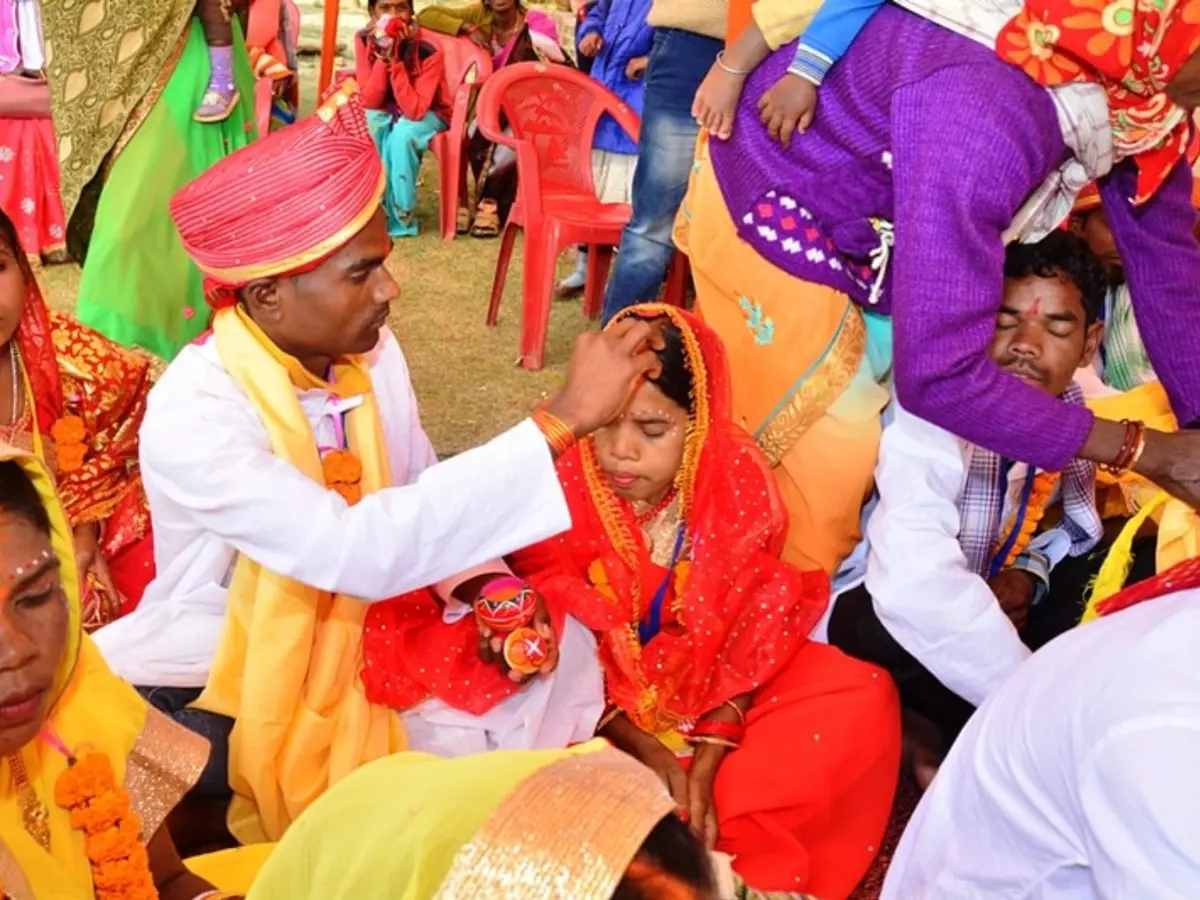Jharkhand's Dhuku Marriage, Where Couples Opt For Live-in Relationships Due To Poverty
In many areas and communities, live-in relationships are still prevalent, but are mostly looked down upon.

While Indians may now be open to the concept of live-in relationships, which is largely deemed western, it turns out the country may not be completely alien to live-in relationships.
The concept of live-in relationships is not new to Indians. In ancient times, it was known as maitri-karar in which a written agreement was made between people of two opposite sex that they would live together as friends and look after each other.
Similarly, Gandharva marriage, one of the eight Hindu marriages, has its roots in the concept of live-in. A man and woman meet each other of their own accord, consent to live together, and their relationship is consummated in copulation born of passion.
In many areas and communities, live-in relationships are still prevalent but are mostly looked down upon.
Staying with a man in a relationship, bearing their children without getting married, without any social acceptance and legal rights - this is an Adivasi tradition in Jharkhand, known as 'dhuku marriage'.
According to the tribal community norm, the woman is recognised as ¡®Dhukni¡¯ and the man is called 'Dhukua'.
It is a civil cohabitation and is approved before and after pregnancy and even after the birth of children. But dhuku marriages are a social bane for tribals in Jharkhand.
 Representational Image
Representational Image
The Munda, Oraon, and Ho tribes primarily practice Dhukna in tribal-dominated rural areas of Jharkhand, and such marriages have been flourishing in patriarchal tribal communities for centuries due to poverty and illiteracy.
Why do couples enter live-in relationships?
Thousands of couples in the tribal villages of Jharkhand stay in live-in relationships because they fail to organise wedding parties.
Sumli Kumari of Khunti, who had got married at the mass wedding, says, ¡°Our people did not allow us to get married as we did not have money to hold a feast for the entire village.¡±
Nikita Sinha, an activist working for the legal rights of live-in couples, tells Indiatimes that there are cases where the three generations of a family never got married only because they had no money to get married and throw a feast for the village. "The fellow villagers do not allow the marriage of a grandson because his grandfather did not throw a wedding feast, and chose to get into a live-in relationship instead," she says.
While the couples in live-in relationships are never harassed, they are never given the respect they deserve, and women suffer the most. The women, dhukni, are not given the rights of a wife, they cannot apply sindoor, nor do they get a part in the husband¡¯s ancestral property, if he dies.
Any children born out of this relationship too are not socially recognised. Getting a child's nose and ears pierced is a tradition in our society but children born out of Dhuku marriages are not allowed to get piercings. As a result, they are never socially recognised and accepted.
Dhuku marriage is a compulsion, not a choice, and tribals for centuries have been deprived of basic social recognition and respect because of poverty.
Nikita tells Indiatimes that she once helped a 70-year-old man get married to his long-time live-in partner who was of a similar age. She is now helping hundreds of tribals in dhuku marriages get married legally by organising mass weddings.
 Mass weddings
Mass weddings
¡°These couples typically have five to eight children. When you have so many children, marriage is not seen as a priority. Having food on the table is the priority,¡± she says, adding that there is fierce opposition from the villagers when such couples finally find the means to get married because for them it is the end of exercising oppression.
Status of live-in relationships in India
The legal status of children born out of live-in relationships remains indecisive in the Indian legislature, though women in live-in relationships have found some respite through the Protection of Women from Domestic Violence Act 2005.
The Supreme Court of India, for the first time in the case of S Khushboo v. Kanniammal (2010) gave legal recognition to live-in relationships by categorizing them as ¡°domestic relationships¡± protected under the Protection of Women from Domestic Violence Act, 2005
The Court held that a live-in relationship comes within the ambit of the right to life enshrined under Article 21 of the Constitution of India.
The right and freedom of choice to either marry or have a live-in relationship with an individual of one¡¯s own will, thus, emerges from this inalienable fundamental right.
The Supreme Court demarcated the difference between law and morality and expressed that even if live-in relationships are regarded as immoral by society, it is neither illegal nor an offence.
Still, no legal protections are extended to couples as the state does not legally recognise the relationship.
